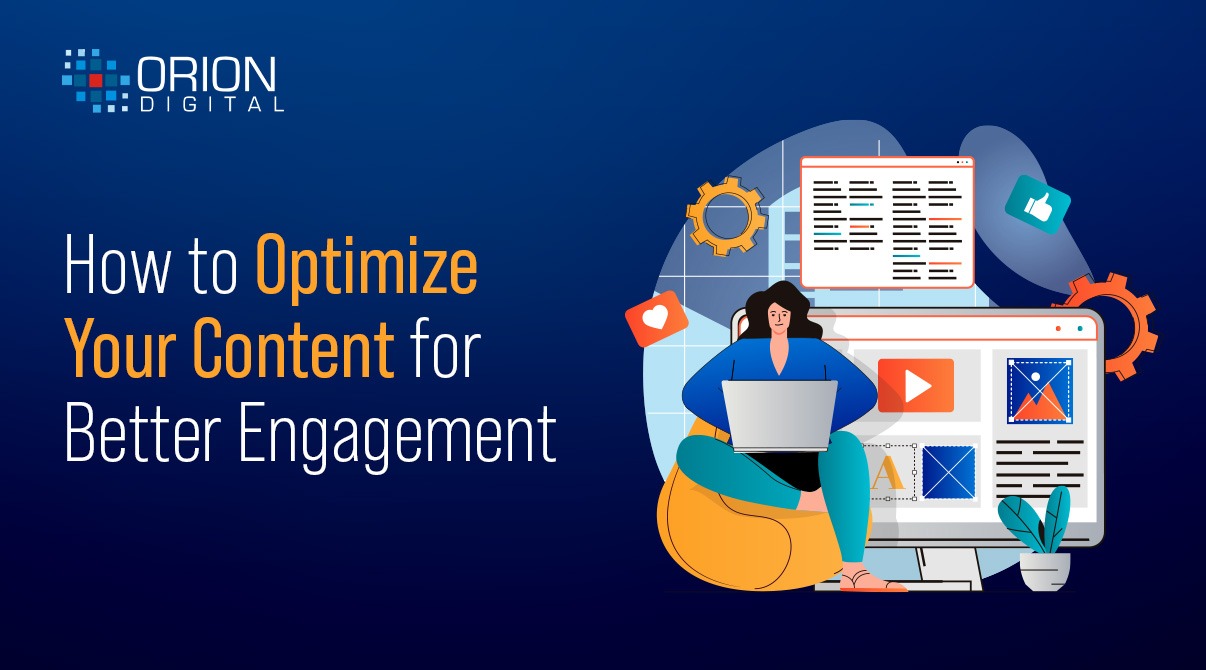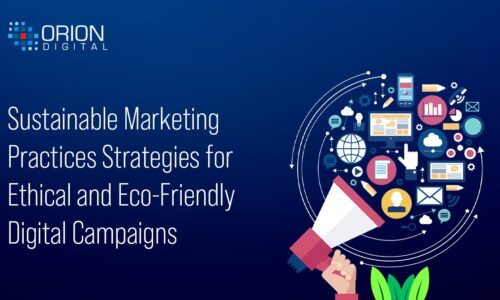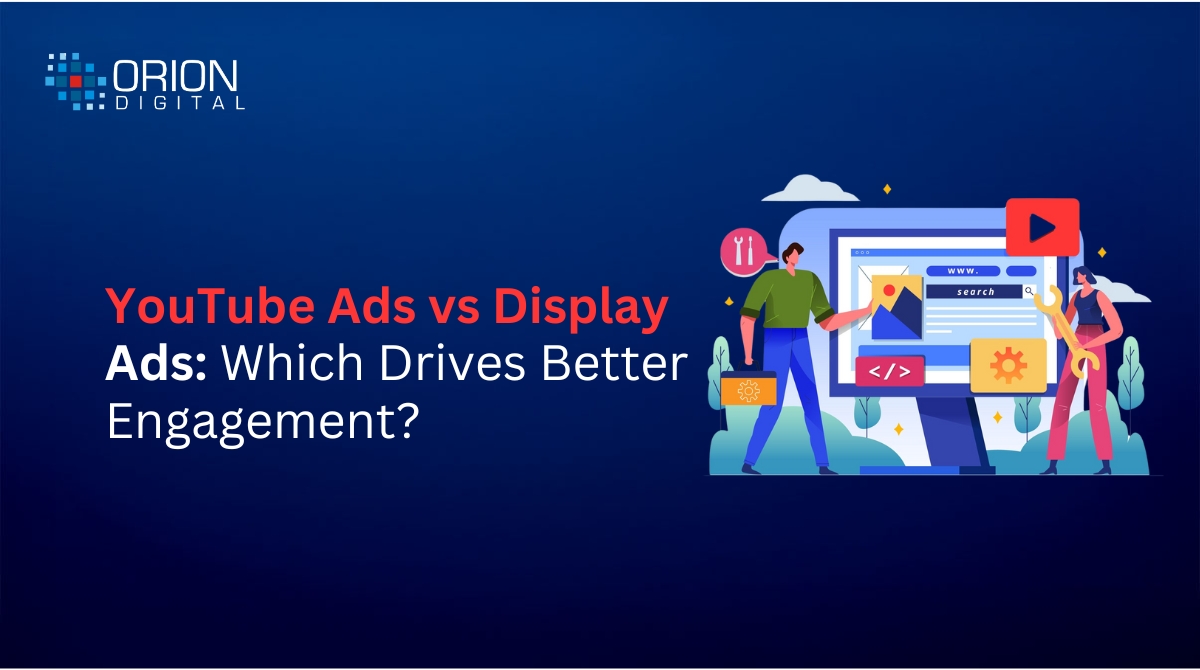
How to Optimize Your Content for Better Engagement
- Naveen N
- July 23, 2024
- Digital Marketing
- content creation, content marketing
- 0 Comments
In today’s digital landscape, creating content is just the beginning. To truly connect with your audience and drive meaningful interactions, you need to optimize your content for engagement.
● Audience Segmentation: Delve deeper into audience segmentation by creating detailed buyer personas. Explore demographics, psychographics, behaviors.
● Customer Journey Mapping: It helps to visualize the customer transformation from awareness to purchase.
● Competitive Analysis: Understand what your competitors are doing well.
● Empathize and Connect: Be empathic with the audience. Address challenges, solutions on a personal level.
● Listen and Learn: Pay attention to audience feedback, comments, and social media interactions.
Craft Irresistible Content
Some tips are shared to create unique content:
● Quality Over Quantity: Focus on creating high-quality, valuable content that provides real solutions or entertainment.
● Storytelling Magic: Humans love stories. Weave compelling narratives into your content to evoke emotions and create a lasting impact.
● Visual Appeal: Incorporate eye-catching images, videos, and infographics to enhance content engagement. Visuals break up text and make content more shareable.
● Optimize for Different Platforms: Tailor your content for various platforms (social media, blogs, email) to reach a wider audience and maximize visibility.
● Encourage Sharing: Make it easy for your audience to share your content by including share buttons and creating share-worthy elements.
● Content Formats: Experiment with various content formats like blog posts, articles, videos, infographics, podcasts, webinars, and interactive content.
● Content Length: Optimize content length based on platform, audience, and topic. Consider short-form content for social media and long-form content for in-depth topics.
● Content Upgrades: Offer valuable incentives like downloadable guides, templates, or checklists in exchange for email subscriptions.
● Content Curation: Share relevant and high-quality content from other sources to establish yourself as an industry expert.
Master the Art of SEO
While SEO is primarily about search engines, it also plays a crucial role in content engagement.
● Keyword Magic: Conduct thorough keyword research to identify relevant terms and phrases that your audience is searching for.
● On-Page Optimization: Optimize titles, headings, meta descriptions, and content with target keywords to improve search visibility.
● Backlink Building: Earn high-quality backlinks from reputable websites to boost your content’s authority and credibility.
● Semantic SEO: Focus on optimizing content for search intent by understanding the underlying meaning of search queries.
● Local SEO: Optimize content for local search if your business has a physical location.
● Technical SEO: Ensure your website is technically sound to improve search engine crawlability and indexing.
Spark Interaction and Engagement
Content is meant to be consumed, but it’s even better when it sparks conversations.
● Ask Questions: Encourage audience participation by asking thought-provoking questions and inviting comments.
● Respond and Engage: Show appreciation for your audience by responding to comments promptly and meaningfully.
● Run Contests and Giveaways: Create excitement and foster community by running engaging contests or giveaways.
● Utilize Polls and Surveys: Gather valuable feedback and insights by conducting polls or surveys.
Leverage Data for Continuous Improvement
Data is your secret weapon for optimizing content performance.
● Track Key Metrics: Monitor engagement metrics like likes, shares, comments, click-through rates, and time spent on page.
● Analyze Audience Behavior: Understand how your audience interacts with your content to identify trends and patterns.
● Experiment and Iterate: Continuously test different content formats, styles, and distribution channels to optimize performance.
● A/B Testing: Compare different versions of your content to determine which elements resonate best with your audience.
Building a Strong Community and Interaction
● Community Building: Create online communities or forums where your audience can interact and share knowledge.
● User-Generated Content: Encourage audience participation by hosting contests, challenges, or user-generated content campaigns.
● Influencer Partnerships: Collaborate with influencers to reach a wider audience and build credibility.
● Live Content: Engage with your audience in real-time through live streams, webinars, or Q&A sessions.
Data-Driven Optimization: The Key to Continuous Improvement
● Advanced Analytics: Utilize advanced analytics tools to track user behavior, engagement metrics, and conversion rates.
● A/B Testing: Experiment with different content variations to determine what works best for your audience.
● Personalization: Tailor content recommendations based on individual user preferences and behavior.
● Content Audit: Regularly assess content performance and identify opportunities for improvement.
Emerging Trends and Future-Proofing Your Content
● Voice Search Optimization: Optimize content for voice search queries by using natural language and conversational tone.
● Artificial Intelligence: Leverage AI-powered tools for content creation, optimization, and personalization.
● Video Content: Prioritize video content as it continues to dominate online consumption.
● Interactive Content: Explore interactive formats like quizzes, polls, and calculators to increase engagement.
● Mobile Optimization: Ensure your content is easily accessible and enjoyable on mobile devices.
● Consistency : Consistency is very important to create your brand popular, authentic and engaging.
● Partnering with Influencers:Make a collaboration with your influencers for your betterment.
● Stay Updated: Keep up with the latest content marketing trends and adapt your strategy accordingly.
By following these guidelines and continuously refining your approach, you can create content that can maximize your reach.




